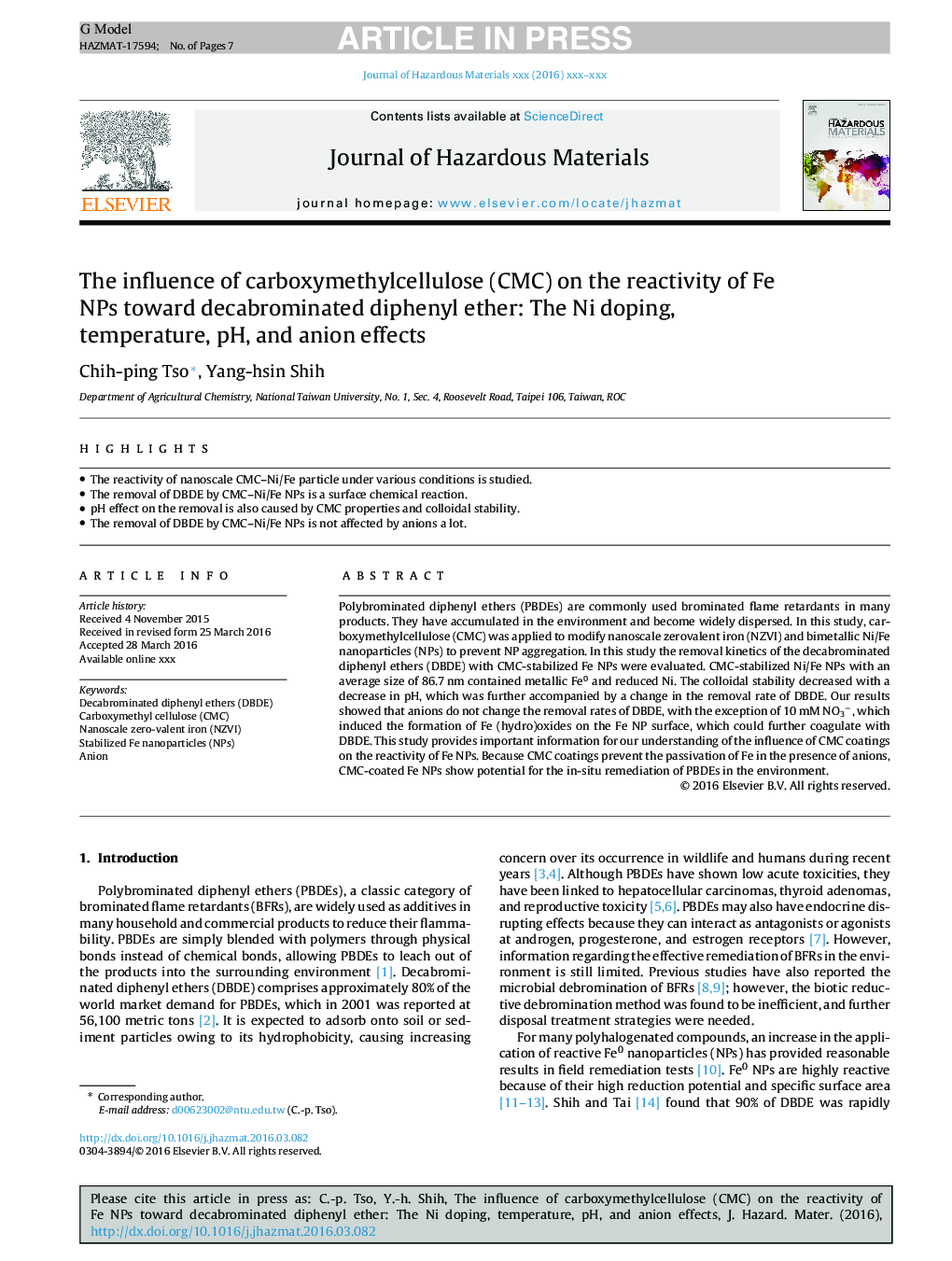| کد مقاله | کد نشریه | سال انتشار | مقاله انگلیسی | نسخه تمام متن |
|---|---|---|---|---|
| 4980131 | 1367820 | 2017 | 7 صفحه PDF | دانلود رایگان |
عنوان انگلیسی مقاله ISI
The influence of carboxymethylcellulose (CMC) on the reactivity of Fe NPs toward decabrominated diphenyl ether: The Ni doping, temperature, pH, and anion effects
دانلود مقاله + سفارش ترجمه
دانلود مقاله ISI انگلیسی
رایگان برای ایرانیان
کلمات کلیدی
موضوعات مرتبط
مهندسی و علوم پایه
مهندسی شیمی
بهداشت و امنیت شیمی
پیش نمایش صفحه اول مقاله

چکیده انگلیسی
Polybrominated diphenyl ethers (PBDEs) are commonly used brominated flame retardants in many products. They have accumulated in the environment and become widely dispersed. In this study, carboxymethylcellulose (CMC) was applied to modify nanoscale zerovalent iron (NZVI) and bimetallic Ni/Fe nanoparticles (NPs) to prevent NP aggregation. In this study the removal kinetics of the decabrominated diphenyl ethers (DBDE) with CMC-stabilized Fe NPs were evaluated. CMC-stabilized Ni/Fe NPs with an average size of 86.7Â nm contained metallic Fe0 and reduced Ni. The colloidal stability decreased with a decrease in pH, which was further accompanied by a change in the removal rate of DBDE. Our results showed that anions do not change the removal rates of DBDE, with the exception of 10Â mM NO3â, which induced the formation of Fe (hydro)oxides on the Fe NP surface, which could further coagulate with DBDE. This study provides important information for our understanding of the influence of CMC coatings on the reactivity of Fe NPs. Because CMC coatings prevent the passivation of Fe in the presence of anions, CMC-coated Fe NPs show potential for the in-situ remediation of PBDEs in the environment.
ناشر
Database: Elsevier - ScienceDirect (ساینس دایرکت)
Journal: Journal of Hazardous Materials - Volume 322, Part A, 15 January 2017, Pages 145-151
Journal: Journal of Hazardous Materials - Volume 322, Part A, 15 January 2017, Pages 145-151
نویسندگان
Chih-ping Tso, Yang-hsin Shih,